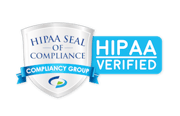It all starts with an epiphany. This is the moment that the leadership of a healthcare enterprise realizes that the key to efficiency, risk mitigation, quality and better outcomes is good information. Having great providers, skilled administrators, best in class point of care applications and cooperative patients can help you win battles. Having information that allows you to measure, predict and adjust your strategy helps you win the war.
Let's call this objective a “Healthcare Information Collective”. The goals of thecollectiveare twofold. First, accumulate all of the data across an enterprise into a single homogenous repository of information. Second, enable terminology governance practices across the enterprise that improve the quality and consistency of the information and positively affect the enterprise’s ability to measure, adjust practices and improve outcomes.
每个医疗企业有一个威尼斯平底渔船信息graphy. In this topography there are people and applications that operate on the front lines of healthcare. These are the provider’s offices, outpatient surgical centers, pharmacies, diagnostic labs, emergency rooms and acute care facilities that interact with patients and create the instance data for the enterprise. They are at the “边缘” of the information topography. Our topography also has a group that is responsible for setting the goals and objectives for the enterprise as a whole and enacting strategies and tactics that should help those at the edges accomplish them. They are primarily consumers of the instance data created at the edges. We will call this group the “center” of our information topography. The way that instance data flows from the edges to the center and master data flows from the center to the edges plays an important role in the success of our Healthcare Information Collective.
Depending on the nature, experience and composition of an enterprise, there are two common approaches that are typically followed in the attempt to establish a Healthcare Information Collective:
- The Promised Land scenario - we need to move all of our providers and patients into a single solution.
- The Information Deity scenario - we need to collect all of the data from all of our solutions into a single repository.
Either of these scenarios is valid as an approach. They both address the first part of the issue which is getting the information from the edges into a single place, but that, in and of itself, will not magically create the desired outcome. Accumulating the data is not enough. In order to provide insight, the data must be assimilated into a common syntactic and semantic framework. Syntactic and semantic normalization can both be resolved with tooling and elbow grease. There are more challenging information quality obstacles that are not easily solvable by technology.
The Prime Directive
The first is something I call theprime directiveof information in healthcare, “Healthcare is local”. This dictates that regardless of your desire to standardize and control information or process, people that provide care will create or change information in ways that they deem necessary to provide care for the patient locally. This is both frustrating and reaffirming. It also takes a common preconception about information in an enterprise and turns it on its head. Trying to dictate master and reference data entirely from a central location is counter to natural order of our ecosystem. In healthcare information evolves from the edges, not the center. This is because the edges is where the critical activity is happening. This is also an aspect of healthcare that is fundamentally different from other industries, like retail or banking or manufacturing, where information evolves slowly or naturally evolves from the center.
Time Waits for No Term
The second issue is the appropriateness of the master and reference data at the point of care. Whether you have a single solution or separate solutions for each of your edges, having structured terms (codes/dictionary items) that are necessary to describe what the providers need for their patients is critical. The time critical nature of the activities at the edges does not allow for a provider to wait while a dictionary is updated. The typical result is critical information is relegated to unstructured text, which is not easily leverage-able in a Healthcare Information Collective.
A Matter of Faith
The third issue is a sobering one. The people that use the systems may not agree with, understand or believe in the purpose of the system. In short, they do not have faith that the time required to accurately populate the data at the edges will deliver value. This disconnect will affect the quality and comprehensiveness of the information that goes into the system. If someone’s critical activity is caring for the patient in front of them and they do not believe that taking time away from the patient to enter information into the system will provide value, or it is too difficult or time consuming, not locally appropriate or not available, it will not be a priority for them. This is human nature.
It is important to understand these issues because, regardless of which scenario is chosen, we tend to institute practices that exacerbate them.
The First Hurdle
Typically, when an enterprise decides to establish a Healthcare Information Collective the first thing they experience is differences in the data (yes, even with a single solution there are interoperability issues).
When this happens, the initial reaction is to fix the problem with standardization. This is typically done with one of the following approaches:
- Authoritarian Approach – This approach favors a central team of experts that dictate the terminologies and practices that will be used across the enterprise.
Or
- Consensus Approach – This approach favors a consensus team comprised of experts from the center and the edges of the enterprise that will concur on terminologies and practices that will be used across the enterprise.
The problem with both of these reactions is that they fly in the face of the “healthcare is local” rule.
The edges will resist anauthoritarian approachbecause healthcare is local and this resistance will exacerbate the third issue of faith.
While theconsensus approachseems edge-friendly, the edges will not easily come to agreement and, even if they do, it is a tenuous truce that will start to diverge as soon as the principle negotiators leave the table and go back to work.
If neither of these approaches is appropriate, then what is the right approach?
Look before you leap
In Proverbs 4:7 is the following passage:
The beginning of wisdom is: Acquire wisdom; And with all of your acquiring, get understanding.
在一个企业中,边缘是这个地方ce information is created, forged by the intersection of reality and terminology. It stands to reason that the entities creating information at the edges of an enterprise are less like a hive of bees, mindlessly carrying out the will of the queen, and more like a family of individuals driven by free will. That being the case you cannot dictate the needs of the individuals from the center, nor will the individuals agree to have identical needs across the family. The needs of the enterprise are a superset of the needs of the entities in our enterprise.
The Information Ecosystem
The information ecosystem is an approach that considers the enterprise as a whole with an understanding that the edges create the information but the center has perspective on the data. The effort is striking a balance between the roles that are in play.
To that end, the first step is to collect the terminologies, for each role, used across the enterprise into a central location, outside of the systems that use them.
The second step is to determine which items are actually used and how often so that we can gauge the relative importance of each item. This helps us focus on things that are actually important at each entity and both for general relevance and variance analysis.
The third step is to take like terms and put them into a framework that allows you to establish conceptual equivalence across terminologies. This enables comparative analytics across enterprise without boiling out the local variances and utilization information. This should not be confused with normalization even though it is similar. In normalization you are taking terms from different places and mapping them to a defined normative reference terminology. What I am describing here is taking the concepts from across your enterprise and synthesizing a normativeenterpriseterminology that represents a superset of all terms used across the enterprise. In the second scenario there is no defined normative reference terminology, the normative terminology for the enterprise is created based on the terms being used by the edges. The Healthcare Information Collective learns what concepts are necessary to support the edges and the local variances in representation and utilization.
This process is an ongoing one that is constantly informing the center of the terminology needs of the enterprise. Once we have accomplished this we have satisfied the first objective of our Healthcare Information Collection:accumulate all of the data across an enterprise into a single homogenous repository of information.
接近现代人理解生态系统的信息ding it, provides valuable insights that allow the center to interact with the edges based on evidence. This approach, which shows an awareness and understanding of the importance and control that the edges have on the enterprise’s information should give the center more credibility when suggesting improvements.
Understanding the variance in terms and how they are used across the enterprise also enables the center to isolate and institute incremental evolutionary changes that are likely to be less controversial and have more impact across the enterprise. As these incremental changes are introduced by the edges they flow back to into Health Information Collective and the cycle continues.
Once established, the collective enables the second objective of our Health Information Collective:Enable the enterprise to enact terminology governance practices across the enterprise that improve quality and consistency of the information which should positively affect the enterprises ability to measure and adjust practices and improve outcomes.
While the process of establishing an Information Ecosystem does not happen overnight it is more likely to create a healthy and sustainable mechanism understanding and evolving how information is used across an enterprise.
As always, I hope this was helpful. Please share your experiences in the comments section.





